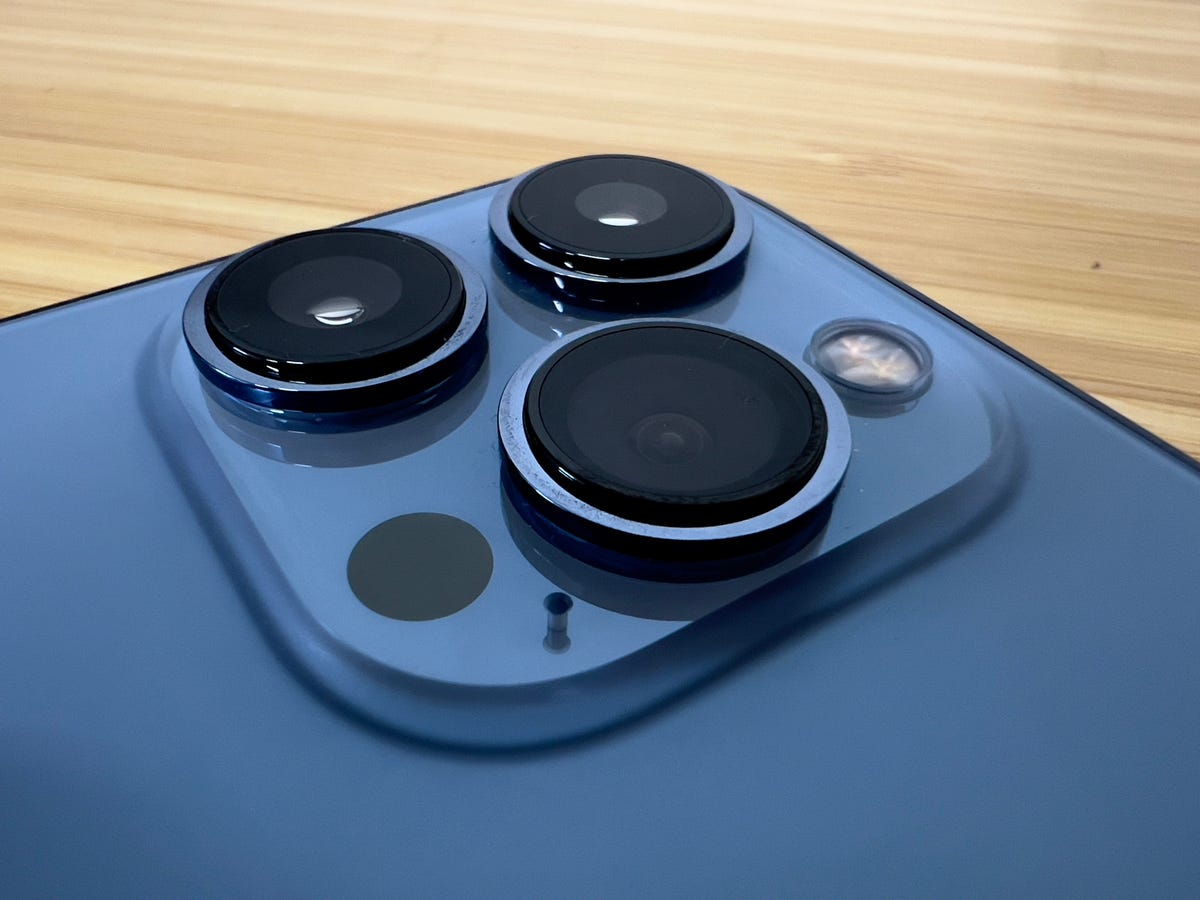iPhone 13 Pro and Pro Max: The cameras are addicting, ProMotion makes a difference Review | ZDNet
Apple’s iPhone 13 lineup promises better battery life and an improved camera experience, along with improved displays on the Pro models, and a speed boost thanks to a new processor.
For the last 24 hours, I’ve been using an iPhone 13 Pro Max Apple sent me to review. I actually received all four iPhone 13 models — the iPhone 13 Mini, iPhone 13, iPhone 13 Pro and iPhone 13 Pro Max — but decided to start my testing with the biggest and most expensive models.
I’m nowhere near close to being ready to give an official verdict about Apple’s newest crop of phones, but here are some of my initial impressions after a days’ worth of use.
Cinematic Mode isn’t perfect, but…
It sure makes me want to record a lot more random videos. Cinematic Mode, which is a feature on all four models, allows you to adjust the focal point, adding a bokeh or portrait mode-like effect to various subjects in the shot. For example, a simple shot to test it with is when there’s a person or object that’s closer to the camera, with a second object in the background that’s not even close to being in focus. With a tap on the screen, you can switch the focal point to the background subject, adding a blurry effect to the closer subject.
That’s a somewhat confusing description. Here’s a quick video I made to demonstrate the feature:
What’s even more interesting is that you aren’t stuck with whatever you record. The depth information is captured for the entire video, and you can edit what’s in focus, out of focus, and the amount of depth that’s added.
I plan on thoroughly testing this over the weekend and into next week, but it’s been a ton of fun to mess with thus far.
A quick comment about macro photos
I’ve always been a fan of macro photographs. I even owned an Olloclip lens attachment for an iPhone years ago that allowed me to take close-up shots of random objects. So when Apple announced the iPhone 13 would have a macro mode, without a dedicated lens like Android phones typically do, I was pretty excited.
So far, the results have been great. Here’s a shot of some sweet potato french fries from a local restaurant I took today.
A close-up shot of some sweet potato fries using Macro mode on the iPhone 13 Pro Max.
Image: Jason Cipriani/ZDNet
I agree with the early iPhone reviewers, Raymond Wong from Input in particular, that the iPhone 13’s automatic switching from a standard photo to macro mode is jarring. The entire viewfinder stutters as the iPhone detects you’re getting closer to an object, and it’s jarring.
Maybe it’s something I, along with everyone else, would adjust to after using the new iPhones for longer, but it’s not a good experience in its current iteration.
Apple has told several outlets, including Input, that it will add a toggle to turn off automatic camera switching for macro mode. Hopefully, that means the user will manually turn on macro mode while in the camera app, and not something buried in the Settings app.
Battery life has been good, so far
The first 24 hours with a new phone is never a reliable way to judge battery performance. Between setting it up and waiting for apps, data and other information to sync, battery life almost always is pretty bad for that first day of testing.
That said, the iPhone 13 Pro Max’s battery has been going strong. It’s currently at 72% after roughly two hours of screen on time, and it’s still trying to sync my iMessage history with iCloud.

The camera bump on the iPhone 13 Pro and Pro Max is a lot bigger than on its iPhone 12 equivalents.
Jason Cipriani/ZDNet
ProMotion is a subtle, but huge improvement
Apple is late with a faster refresh rate for the iPhone — it’s something Android makers, and Samsung in particular, have been doing for years. Heck, even Google’s Pixel line has flirted with faster refresh rates.
The iPhone 13 Pro and 13 Pro Max both have a ProMotion display that relies on iOS 15 to adjust the refresh rate from 10MHz to 120MHz, based on what you’re currently using the phone for. The higher end of that refresh rate is used for things like gaming, scrolling through a document or your Twitter feed (or this story, if you’re reading it on your phone), while looking at a static image will decrease the refresh rate in order to save battery.
The increased refresh rate isn’t a feature that jumps out and grabs your attention in the way that a camera feature does. Instead, it’s something that you slowly begin to notice and appreciate. For example, scrolling the Photos app while I was looking for an old picture felt incredibly smooth. Swiping between pages of a book in the Kindle app just looked cleaner.
I plan on playing some games over the weekend, hopefully finding something that pushes ProMotion to its 120Mhz limit. I’m also curious if there’s an impact on battery life due to the higher refresh rate.
I’ll have plenty more thoughts and opinions about the overall upgrade and iPhone 13 Pro experience (as well as the standard iPhone 13 and iPhone 13 Mini) in the coming days.
Until then, if there’s something you want me to test or check out, leave a comment or reach out to me on Twitter @MrCippy.
For all the latest Technology News Click Here
For the latest news and updates, follow us on Google News.
